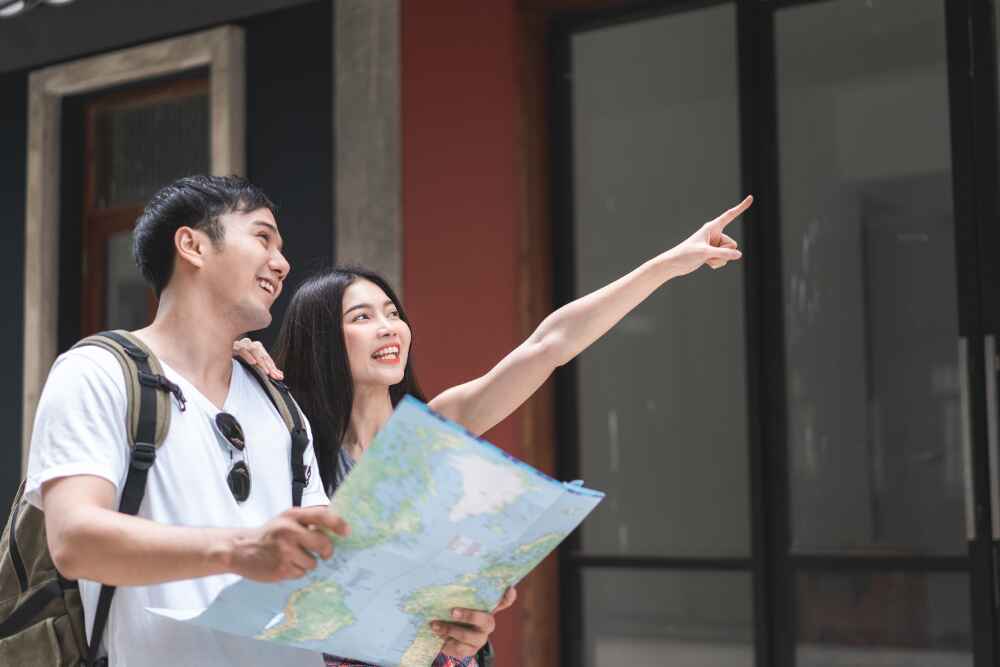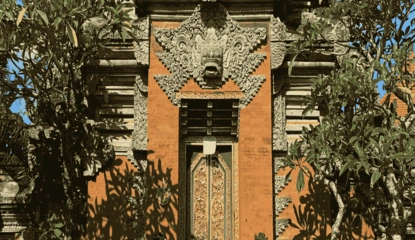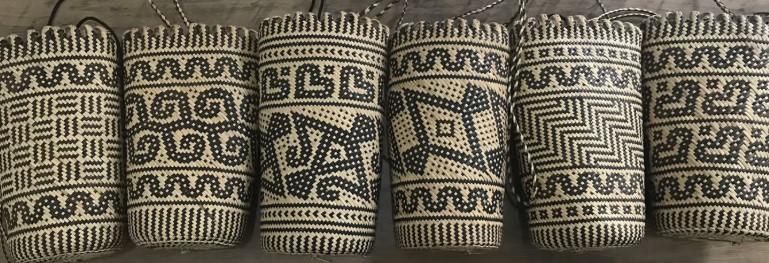Indonesia's traditional bags are more than just accessories—they are expressions of cultural identity, artistry, and centuries-old heritage. Each handcrafted bag showcases intricate skills passed down through generations, with unique styles that vary by region. Whether crafted from natural fibers or adorned with symbolic motifs, these bags offer a fascinating glimpse into Indonesia's rich cultural diversity. Here's a look at some of the most iconic traditional bags, their uses, where you can find them, and what to expect in terms of cost.
1. Anjat Bag, Dayak Tribe, East Kalimantan
Photo credit: x.com/basukids1
The Anjat bag represents the skill and artistry of the Dayak Kenyah tribe in East Kalimantan. Made from natural materials like rattan, bamboo, or pandan leaves, this cylindrical, woven bag stands out for its openwork design and cultural significance. Standing at about 70 cm tall with a 50 cm circumference, Anjat bags are crafted using meticulous weaving techniques that depict symbolic Dayak motifs, embodying the tribe's connection to nature and their heritage.
- Use and Significance: Traditionally, Dayak men use Anjat bags to carry supplies while hunting, and women use them for gathering produce. During cultural ceremonies, Anjat bags are worn as part of ceremonial attire to signify social status and identity.
- Where to Buy: Visitors to East Kalimantan can find Anjat bags in local markets or cultural centers. Price: Anjat bags range from IDR 180,000 to 250,000 (approximately USD 12 to 17), depending on complexity and craftsmanship.
2. Koja Bag, Baduy Tribe, Banten
The Koja bag, made by the Baduy tribe in Banten, is a durable bag crafted from the inner bark of the teureup tree, known for its resistance to termites. This eco-friendly bag is woven entirely by hand, with each step—from harvesting to drying the bark—reflecting the Baduy tribe’s traditional lifestyle and sustainable practices.
- Use and Cultural Role: Koja bags are integral to Baduy daily life, used to carry harvested crops, food, and handmade tools. They also hold symbolic meaning in Baduy rituals and serve as a sign of identity for this indigenous community.
- Where to Buy: When visiting Baduy villages, purchasing a Koja bag directly supports the local artisans. Price: Prices vary from IDR 35,000 to 250,000 (around USD 2.50 to 17), based on the size and design.
3. Tenun Bag, East Nusa Tenggara (NTT)
Photo credit: fortuna.press
Tenun bags from East Nusa Tenggara (NTT) are crafted from locally woven ikat fabrics, renowned for their durability and intricate designs. Each piece of fabric tells a story through its patterns, often reflecting the history, environment, and beliefs of NTT’s various communities. The bags are typically fashioned from cotton or silk fibers and sometimes combined with leather, creating a unique, durable product with global appeal.
- Cultural Significance: The tenun technique represents a strong connection between humans, nature, and the divine in NTT’s cultural beliefs, as the designs capture elements of local folklore and environment.
- Where to Buy: Tenun bags are available in NTT’s artisan markets and cultural villages. Price: Prices vary depending on the fabric and size, generally starting from IDR 200,000 (around USD 13.50).
4. Noken Bag, Papua
Photo credit: hops.id
The Noken bag is one of Papua's most cherished traditions, recognized as an intangible cultural heritage by UNESCO. Made from natural tree fibers such as manduam or forest orchid, Noken bags are woven into net-like structures and worn on the head, with the bag resting on the wearer’s back. Papuans use Noken bags for everything from carrying harvested produce to shopping or even transporting young children.
- Cultural Importance: Noken bags come in various sizes, with larger ones (yatoo) used for heavy loads like firewood and crops, and smaller ones (mitutee) for personal belongings. In addition to their practical use, these bags symbolize fertility, peace, and prosperity among Papuan communities.
- Where to Buy: Travelers can find Noken bags in Sauwandarek Village, where artisans demonstrate the traditional weaving process. Price: Depending on size and quality, Noken bags cost IDR 25,000 to 50,000 (approximately USD 1.70 to 3.40).
Tips for Visiting and Purchasing Traditional Bags
- Support Local Artisans: By purchasing these traditional bags, you contribute to the livelihoods of local communities and help preserve Indonesia's cultural heritage.
- Shop in Local Markets and Villages: Visiting local markets in Kalimantan, Banten, NTT, or Papua offers a more authentic shopping experience and ensures that artisans receive fair prices for their work.
- Look for Cultural Centers: Cultural centers often provide a deeper understanding of each bag's cultural context and crafting techniques, enhancing the overall experience.
As you explore Indonesia's traditional bags, each piece reveals a unique story of heritage, artistry, and community. These bags not only serve as functional items but are symbols of Indonesia's rich and diverse cultural landscape. Don’t miss out on discovering more about #WonderfulIndonesia by following @wonderfulindonesia on Instagram, where breathtaking destinations and experiences await. Embrace the adventure, connect with the culture, and let Indonesia inspire your next travel story!







